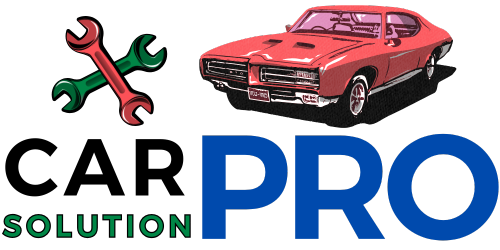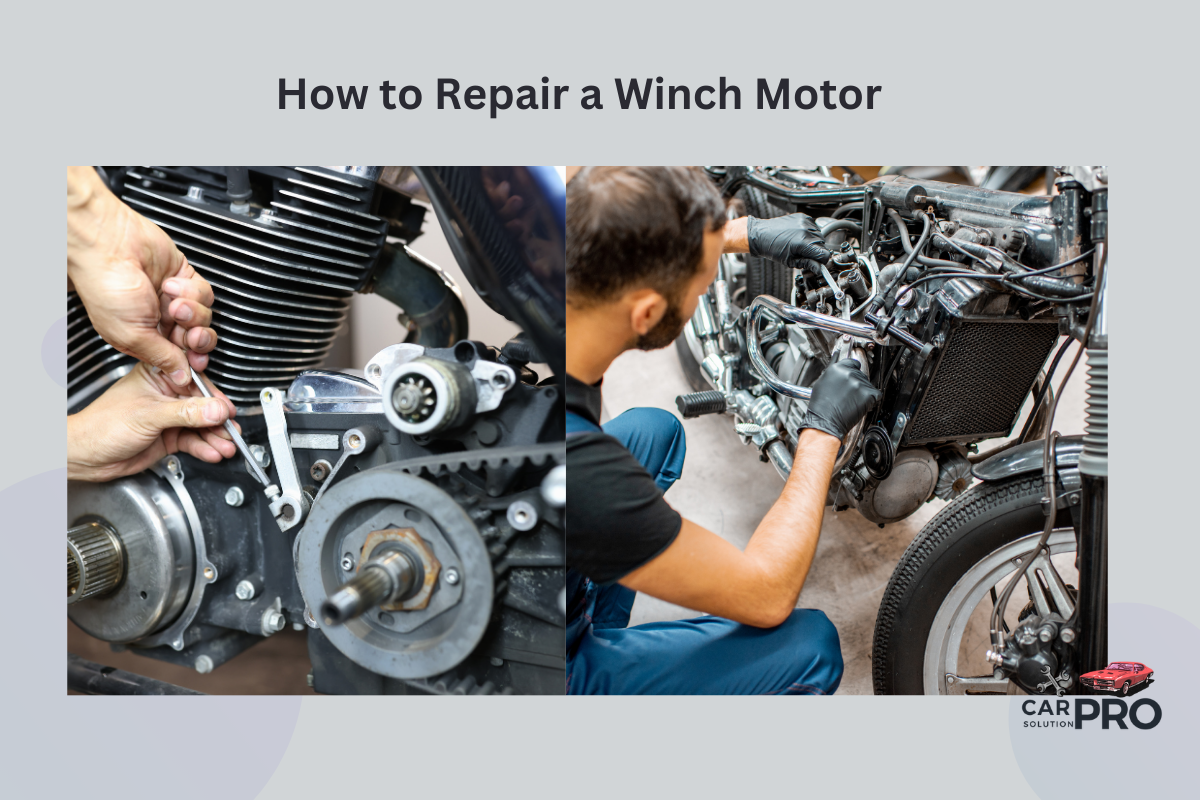Winch motors are crucial for off-road adventures and heavy-duty tasks. When these motors fail, it can put a damper on your plans. But don’t worry – fixing a winch motor is often simpler than you might think.
With some basic tools and knowledge, you can diagnose and repair common winch motor issues yourself. This can save you time and money compared to taking it to a shop. Plus, you’ll gain valuable skills for future maintenance.
Before diving in, it’s important to understand how winch motors work. This knowledge will help you spot problems early and fix them correctly. We’ll guide you through the process step-by-step, from diagnosis to repair and testing.
Key Takeaways
- Regular maintenance prevents most winch motor issues
- Basic tools and safety gear are essential for repairs
- Proper diagnosis leads to effective fixes and longer motor life
Understanding the Winch Motor Mechanism
Winch motors play a key role in powering winches for off-road vehicles and other applications. These motors convert electrical energy into mechanical force to pull heavy loads.
Components of a Winch Motor
A winch motor has several important parts:
- Armature: The rotating core that generates motion
- Field magnets: Create a magnetic field for the armature to interact with
- Brushes: Conduct electricity to the armature
- Commutator: Reverses current flow to keep the armature spinning
- Gears: Increase torque output
The housing protects these internal components. Winch motors also have electrical connections for power input.
How a Winch Motor Works
When electricity flows into a winch motor, it creates electromagnetic fields. These fields interact to produce rotational force.
The process works like this:
- Current enters through the brushes
- The armature becomes magnetized
- It’s repelled by the field magnets
- This spins the armature
- The commutator switches current direction
- The cycle repeats, maintaining rotation
Gears multiply the motor’s torque. This gives winches their high pulling power. The motor’s direction can be reversed by changing the current flow. This allows winches to both extend and retract cable as needed.
Safety Precautions and Preparation
Fixing a winch motor requires caution and proper setup. Taking safety measures and isolating the motor are key steps before starting repairs.
Personal Safety Gear
Wearing the right protective equipment is crucial when repairing a winch motor. Safety glasses protect your eyes from debris and sparks. Durable gloves shield your hands from sharp edges and electrical components.
Sturdy work boots provide stability and protection for your feet. Wear long sleeves and pants to cover exposed skin. A dust mask can help filter out small particles in the air.
Keep a first aid kit nearby in case of minor injuries. Make sure your work area is well-lit and ventilated. Remove any jewelry or loose clothing that could get caught in moving parts.
Winch Motor Isolation
Before working on the motor, disconnect the winch from its power source. For electric winches, unhook the battery cables. On hydraulic winches, shut off the power steering pump.
Ensure the winch line is not under tension. Release any load and fully unwind the cable. Use wheel chocks to prevent the vehicle from moving.
Check that all controls are in neutral position. Allow the motor to cool completely if it’s been used recently. Place a protective cover over nearby vehicle parts to prevent damage from tools or falling components.
Diagnosing Common Winch Motor Issues
A winch motor can fail due to various reasons. Knowing how to spot these issues helps fix them quickly. Let’s look at the main types of problems you might face.
Electrical Problems
Winch motors often have electrical issues. A common problem is a dead battery or loose connections. Check the battery first. Make sure it’s charged and the terminals are clean.
Look at the wiring next. Loose or corroded wires can stop the motor from working. Inspect all connections and tighten them if needed.
The solenoid is another part to check. It controls power to the motor. A bad solenoid can cause the winch to fail. Test it with a multimeter to see if it’s working right.
Fuses and switches can also cause trouble. Check if any fuses are blown. Make sure the control switch is working properly.
Mechanical Failures
Mechanical issues can stop a winch from working right. One problem is a stuck gearbox. This happens when gears get jammed or break.
The clutch can also fail. If it’s not engaging, the drum won’t turn. Listen for unusual noises when using the winch. They often mean mechanical trouble.
Check the brake system too. A faulty brake won’t hold the load. This can be dangerous when winching.
Inspect the drum and cable. A bent drum or frayed cable can cause the winch to jam. Replace damaged parts to avoid bigger problems.
Wear and Tear
Over time, winch motors wear out. Regular use in tough conditions speeds this up. Watch for signs of wear on moving parts.
The brushes in the motor can wear down. This causes weak performance or no movement at all. Inspect the brushes and replace them if they’re worn.
Bearings can also wear out. This leads to more friction and heat. Listen for grinding noises that might mean bad bearings.
Check seals and gaskets too. Worn seals let water and dirt in. This can cause rust and damage inside the motor.
Keep an eye on the winch’s overall performance. Slow operation or strange noises often mean it’s time for maintenance or repair.
Repairing the Winch Motor
Fixing a winch motor involves replacing damaged components, proper lubrication, and addressing electrical issues. These steps can restore functionality and extend the life of your winch.
Replacing Faulty Parts
Start by inspecting the motor for visible damage. Look for worn brushes, a damaged armature, or broken gears. These parts often wear out first.
Remove the motor cover carefully. Disconnect wires and label them for easy reassembly.
Take out damaged parts. Clean the motor housing thoroughly before installing new components.
Replace worn brushes with matching ones. Ensure they sit correctly in their holders.
If the armature is damaged, replace it entirely. This is crucial for proper motor function.
Check gears for stripped teeth or cracks. Replace any faulty gears to prevent future issues.
Lubrication and Maintenance
Clean all moving parts before lubricating. Remove old grease and debris with a degreaser.
Apply high-quality marine grease to gears and bearings. This prevents rust and reduces wear.
Use a light oil on the armature shaft. This helps it spin freely.
Check seals and gaskets. Replace if cracked or worn to keep water and dirt out.
Inspect the motor’s end caps. Clean and re-grease the bearings inside.
Regular maintenance extends motor life. Clean and lubricate every few months or after heavy use.
Electrical Repairs
Test the motor with a multimeter. Check for continuity and proper resistance.
Examine wires for fraying or corrosion. Replace damaged wires with the correct gauge.
Clean all electrical connections. Use electrical contact cleaner to remove dirt and oxidation.
Check the brushes for good contact with the commutator. Adjust if needed.
Inspect the solenoid for signs of failure. Replace if it’s not functioning correctly.
Test the remote control and its wiring. Ensure signals reach the motor properly.
If issues persist, consider replacing the entire motor assembly with a compatible unit.
Testing and Reassembling
After repairing a winch motor, proper testing and reassembly are vital. These steps ensure the motor functions correctly and safely before reinstallation.
Function Test
Start with a low voltage bench test to gently activate the motor. Connect a 12-volt battery to the motor terminals. Listen for unusual noises and check for smooth rotation.
Next, perform a full-load test. Attach a weight to simulate real-world conditions. Run the motor in both directions for short intervals. Monitor performance and heat buildup.
Check the brushes and commutator. Look for even wear on the brushes and a clean commutator surface. Replace brushes if worn beyond 50% of their original length.
Inspect all electrical connections. Ensure they are tight and free from corrosion. Clean any dirty contacts with electrical contact cleaner.
Performance Assessment
Measure the motor’s current draw using an ammeter. Compare readings to manufacturer specifications. High current may indicate internal issues.
Test the motor’s speed and torque. Use a tachometer to measure RPM under different loads. Compare results to the motor’s rated specifications.
Check for overheating during extended operation. Use an infrared thermometer to monitor temperature. Allow cooling periods between tests.
Verify the motor’s IP rating for water and dust resistance. Conduct a water spray test if applicable, ensuring no water enters the motor housing.
Finally, reassemble the winch carefully. Follow the manufacturer’s torque specifications for all fasteners. Apply dielectric grease to electrical connections for protection against moisture.
Frequently Asked Questions
Winch motor repairs involve diagnosing issues, fixing common problems, and performing regular maintenance. Understanding electrical systems and proper troubleshooting techniques can help resolve many winch motor failures.
How can one diagnose a faulty winch motor?
To diagnose a faulty winch motor, start by checking the battery connections and voltage. Listen for any unusual sounds when activating the winch. Test the motor by connecting it directly to a power source. If it doesn’t run, the motor may need replacement.
Inspect the brushes inside the motor for wear. Look for signs of overheating or burning on the motor casing.
Are there common issues that can be repaired in a winch motor?
Common repairable issues in winch motors include worn brushes, damaged wiring, and dirty commutators. Replacing worn brushes can often restore functionality. Cleaning the commutator with fine sandpaper can improve electrical contact.
Loose connections inside the motor can be tightened. Damaged wiring can be repaired or replaced if accessible.
What steps should be taken when an electric winch motor fails to operate?
When a winch motor fails to operate, first check the power supply and connections. Ensure the battery is fully charged and terminals are clean. Inspect the wiring for any visible damage or loose connections.
Test the solenoid by bypassing it with jumper cables. If the motor works, replace the solenoid. If not, the issue may be in the motor itself.
What could prevent a winch from engaging properly?
A winch may fail to engage due to a stuck or damaged clutch mechanism. Check if the clutch is fully disengaged or engaged. Debris in the gearbox can also prevent proper engagement.
Worn or damaged gears inside the winch can cause engagement issues. Inspect the gears for signs of wear or broken teeth.
How to troubleshoot electrical issues in a winch system?
To troubleshoot electrical issues, use a multimeter to check voltage at various points in the system. Start at the battery and work towards the motor. Check for proper voltage at the solenoid and motor terminals.
Inspect all wiring for signs of damage or corrosion. Test the remote control and its wiring for continuity. Replace any faulty components found during testing.
What maintenance procedures can prevent winch motor failures?
Regular cleaning and lubrication of the winch motor can prevent failures. Remove dirt and debris from the motor housing. Apply lubricant to moving parts as recommended by the manufacturer.
Check and tighten all electrical connections periodically. Inspect the motor brushes for wear and replace them when necessary. Keep the winch covered when not in use to protect it from the elements.


